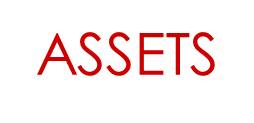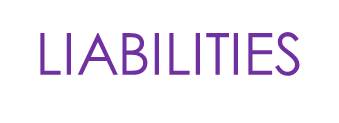It's **Year End** at most companies. Two words which bring about dread and sleepless nights for many.
The three most commonly prepared financial statements for a small business are a balance sheet, an income statement, and a cash flow statement.
Your balance sheet provides a picture of the state of your company’s financial position on a given date. It is an important decision-making tool:
- Comparing balance sheets over time can give a good indication of the financial health of a business
- Together with other financial statements, your balance sheet forms the basis for more sophisticated analysis of the business
- Allows you to evaluate a company’s flexibility and liquidity.
The balance sheet is based on the basic accounting equation:


All balance sheets show the same categories of assets arranged in order of how quickly they can be turned into cash:
· Current assets, include cash, stocks and bonds, accounts receivable, inventory, prepaid expenses and anything else that can be converted into cash within one year or during the normal course of business.
Cash includes cash on hand, in the bank and in petty cash.
What you are owed by customers makes up accounts receivable is. To make this number more realistic, you should deduct an amount from accounts receivable as an allowance for bad debts.
The value of inventory is the cost to replace it if your inventory were destroyed, lost or damaged.
Prepaid expenses represent an item or service that has been paid for but has not been used or consumed eg lump sum insurance premiums
Fixed assets are also known as long-term assets, and are distinguished from current assets by their longevity. They are not for resale. All fixed assets (except land) are shown on the balance sheet at original (or historic) cost less any depreciation.
Although fixed assets will vary considerably and depend on the business type, size and market, most small businesses list the following as fixed assets: furniture and fixtures, motor vehicles, and machinery and equipment.
Other assets are generally intangibles —such as patents, royalty arrangements and copyrights. They can only be included if you know their fair value.

What your business owes, arranged in order of how soon they must be repaid.
Current liabilities are due for payment within a year:
Accounts payable is the total you may owe any suppliers or other creditors.
Notes payable refers to any amount due on a loan during the next 12 months.
Accrued payroll taxes would be any compensation to employees who have worked, but have not been paid, at the time the balance sheet is created
Long-term liabilities include your bond, your bank loans, and all debts that are due for payment more than one year from the date of the balance sheet.

Often referred to as net worth, or net assets, owner’s equity is the money you have left over after selling everything in the company, and paying off all liabilities. In other words, the formula for a balance sheet:
Assets = Liabilities + Owner’s Equity (net worth)
can be transposed to define net worth
Net Worth (OE) = Assets − Liabilities
Most important when drawing up your balance sheet is to maintain its integrity of this valuable tool. This is directly related to the information that goes into its construction – in other words, your record-keeping needs to be meticulous. Here is a quick checklist prior to starting:
- Are the financial records for all (or most) of the company’s assets and liabilities filed in one place?
- Is there a record of the amounts and sources of cash expended to begin the business and acquire inventory?
- Do you know what is currently owed to the bank, creditors, or others?
- Do you know how much of what is owed is due in the next year?
- Can you estimate what percentage of accounts receivable may not be received?
Make sense of what your balance sheet is telling you, and how you can use that information to build a better business:
This email address is being protected from spambots. You need JavaScript enabled to view it. | 083 256-0378

